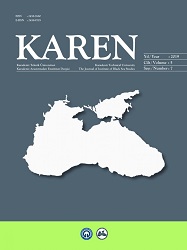Selçuklular Devrinde Kırım’ın Sosyal, Kültürel, Ekonomik ve Dinî Gelişimine Bir Bakış
A Look at the Social, Cultural, Economic, and Religious Development of Crimea During the Seljukian Era
Author(s): Hüseyin KayhanSubject(s): Theology and Religion, International relations/trade, Economic development, 6th to 12th Centuries
Published by: Karadeniz Teknik Üniversitesi - Karadeniz Araştırmaları Enstitüsü
Keywords: Crimea; Sudak; Kaffa; Genoese; Trade;
Summary/Abstract: Crimea was turned into an area of international trade in the 7th century, during the period in which Khazar Qaganate became sovereign. Having control over the new trading center around the Black Sea, the Hazar Qaganate generalized the 10% customs duty that was gained from the foreign traders coming to the country, the Russians and Volga Bulgarians, to other countries. After the Khazars, Pechenegs dominated this region, having a role in making Crimea an international trade area as well. The Kipchak Turks, who were dominating the Northern Black Sea and Crimea in the 11th to13th century, continued this policy when the Seljukians had dominiation over the Middle East. Continuing the economic policies of the Hazars, Kipchaks settled for10% customs duty from the traders and played an intermediary role by selling the goods that they bought from Volga region to third countries. When the Seljukian traders were prevented from doing trade in that area, Sultan Alâeddin Keykubad started a campaign against Crimea with the Seljukian fleet in 1225, led by the governor of Kastamonu, Hüsameddin Çoban, after which he captured Sudak. The Seljukian dominance in this region continued until the Mongolian invasion in 1229.
Journal: Karadeniz Araştırmaları Enstitüsü Dergisi
- Issue Year: 5/2019
- Issue No: 7
- Page Range: 85-98
- Page Count: 14
- Language: Turkish

